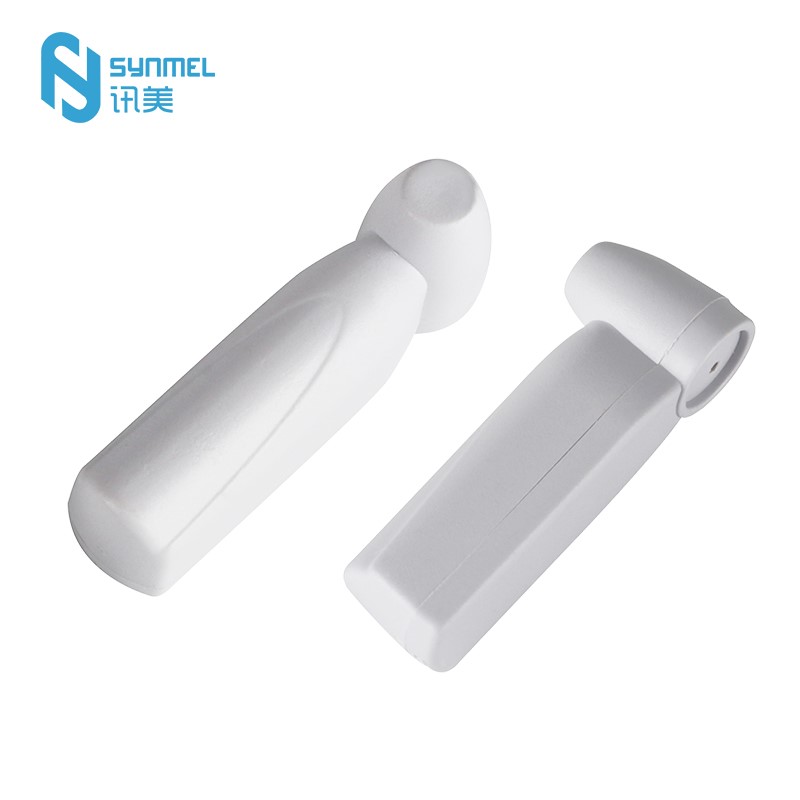- English
- Español
- Português
- русский
- Français
- 日本語
- Deutsch
- tiếng Việt
- Italiano
- Nederlands
- ภาษาไทย
- Polski
- 한국어
- Svenska
- magyar
- Malay
- বাংলা ভাষার
- Dansk
- Suomi
- हिन्दी
- Pilipino
- Türkçe
- Gaeilge
- العربية
- Indonesia
- Norsk
- تمل
- český
- ελληνικά
- український
- Javanese
- فارسی
- தமிழ்
- తెలుగు
- नेपाली
- Burmese
- български
- ລາວ
- Latine
- Қазақша
- Euskal
- Azərbaycan
- Slovenský jazyk
- Македонски
- Lietuvos
- Eesti Keel
- Română
- Slovenski
- मराठी
- Srpski језик
Considering an EAS Hard Tag Merchandise Protection Strategy
2020-11-04
When looking to protect their merchandise, retailers can choose from a number of electronic article surveillance (EAS) hard tag options, including in-store applied hard and alarming tags, factory-applied source/soft tag labels, and factory-applied hard tags (FAHT).

FAHT differ from in-store applied hard tags and factory-applied soft tags in several ways, depending on your current EAS strategy. First, it saves the cost of labor by moving the tagging process outside the store. Second, it reduces inventory shrinkage not only in store, but throughout the entire supply chain, when EAS pedestals are implemented at distribution centers. Finally, FAHT comes with an ongoing cost (rather than a one-time expense).
Retailers must consider their current shrink rate in terms of dollars and store impact, the cost of tags and product coverage, the store payroll savings, and the existing EAS infrastructure when considering the pros and cons of FAHT implementation.
EAS Hard Tags and Shrink Rate
In 2009, Gap Inc. realized shrink savings between 50 and 70 percent in product categories protected by FAHT. This improvement was noteworthy due to the fact that the shrink reduction was realized in departments that had previously been protected by in-store applied EAS hard tags. Conscientious compliance in tagging at the factory level thus yielded the improved shrink numbers.
“The other key benefit associated with reducing shrink is the opportunity cost of not being able to sell the merchandise. Without a doubt, sales and margins improve when shrink is reduced because the product is sold rather than stolen,” says Ryan H. Smith, former director of finance for Gap Inc.’s loss prevention department, in a 2009 article for LP Magazine. “The challenge is estimating the recapture in gross margin dollars due to the reduced shrink. The recommended method to include this benefit is to use a weighted average gross margin of the tagged product multiplied by the estimated shrink savings. This way, not only is the benefit from shrink savings included in your business case, but the margin upside as well.”
Tag Costs
How much will your company pay for EAS hard tags? This number depends on the expected volume to be used annually, which is based on the size of the company and the number of units you expect to tag. But the cost of the EAS hard tag itself is rarely the final number when it comes to total tag costs. Other elements of tag cost include:
- Cost to ship tag from point of manufacture to factory
- Duty or customs rates between companies
- Applicable credits for reusing or recycling the tags
Your company should consider several factors before deciding which product categories need to be tagged. These factors should include the financial benefits of applying FAHT to a particular product department, whether an EAS hard tag can be applied without damaging the merchandise, and what shrink-reduction estimates are in place for that product category. “Generally, higher-priced, lower-unit categories are more likely to show a positive return on investment as the savings on shrink and payroll exceed the incremental cost of the tags,” says Smith.
Infrastructure Considerations
When your EAS hard tags are applied at the factory, you should make sure that your stores have all implemented a consistent, single-technology EAS infrastructure. If needed, your company may need to upgrade or add to existing equipment. The resale of existing EAS pedestals, etc. may provide additional funding for the new FAHT program as well. Or, consider choosing an FAHT vendor with whom you can leverage and reuse some of your existing equipment.
Looking at Your Shrink
“One of the greatest benefits of a FAHT program is its universal coverage in all stores. This can also be its greatest downfall,” says Smith. “For example, if your shrink is highly concentrated in one region with little to no shrink in the remaining regions, a FAHT strategy is, in all probability, not the right solution for you to reduce shrink. In this scenario, the greatest financial benefit would likely come from using a regional in-store hard-tag strategy where you are concentrating the expense and savings associated with tagging where the shrink is occurring.”
EAS Hard Tag Program Implementation
Store executives will be more likely to support your overall merchandise protection strategy if the FAHT program implementation is executed smoothly. Partnerships with sourcing and production teams, as well as with store operation, are crucial to the success of a program. Tag providers will be contacting individuals on the sourcing and production teams to hammer out details for delivery times, costs, and tag placements. The store operations team will also support the program by monitoring factory compliance. It’s important to make sure these partners fully understand the reasoning for FAHT implementation.
“Increasing merchandise manufacturing costs by adding a security tag or label may not be well accepted by a merchant, which may lead to poor compliance in adding the tag to the merchandise bill of materials,” points out Smith. “However, when the same merchant understands that the program will enable stores to retain the product to sell at full price, they will understand that the tags provide a significant benefit.”
In-Store Applied Hard Tags
In-store tagging can sometimes provide a greater ROI than FAHT when these conditions apply:
- A lack of existing EAS infrastructure
- A concentrated shrink problem in a single geographic area
- A product mix for which hard tagging would be inappropriate
Starting from scratch with EAS infrastructure is expensive. Even with financial returns due to FAHT shrink reduction, a company may not recoup the costs of installing a fleet-wide EAS infrastructure and consistent technology platform for several years.
“FAHT is a ‘shotgun’ or ‘blanket’ approach, whereas in-store tagging can leveraged in a ‘rifle’ or ‘scalpel’ approach ,” says Smith. “For example, if there is an acute shrink issue in Dallas, the city and surrounding area can be covered while not simultaneously covering Phoenix, where there may not be an issue. This way, your resources can be focused on reducing shrink in specific geographic areas of concern.”
Final Thoughts
An LP team can gain credibility and traction within a company when it is able to present a holistic look at the overall shrink reduction strategy and thoughtfully execute the right merchandise protection strategy for its stores. Whether that strategy involves in-store hard tags or an FAHT program depends on a careful evaluation of organizational needs.



